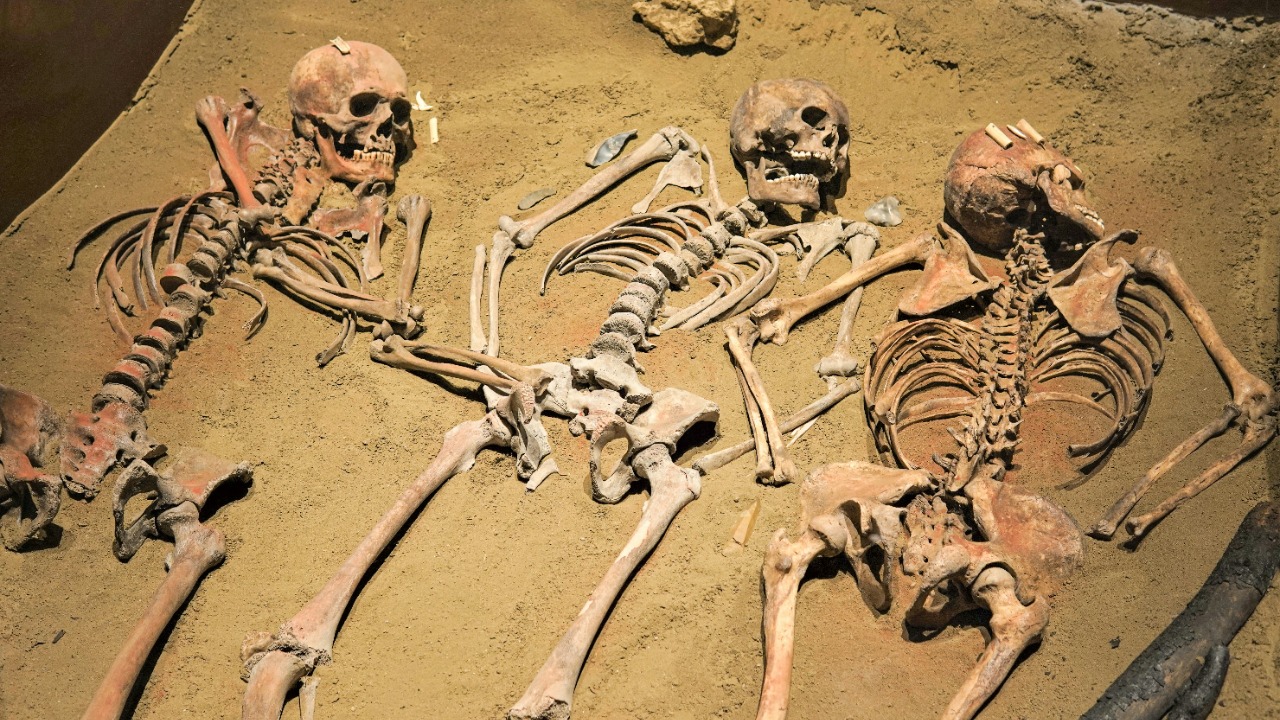
Scientists have recently developed a groundbreaking pregnancy test that can detect pregnancy in skeletons buried approximately 1,000 years ago. This innovative method leverages a newly discovered secret code hidden in DNA, allowing researchers to identify preserved biological markers indicative of pregnancy. The breakthrough, detailed in recent studies, promises to transform our understanding of ancient reproductive histories and the lives of women from medieval or earlier periods.
The Breakthrough Pregnancy Test
The creation of a pregnancy test specifically designed for analyzing ancient remains marks a significant advancement in archaeological science. This test is capable of detecting signs of pregnancy in skeletal evidence from women interred centuries ago. The test has shown promising results on skeletons estimated to be 1,000 years old, providing a new lens through which to view historical female burials. The scientific validation process has confirmed its efficacy, offering a non-invasive method suitable for use on specimens held in museums. This development opens up new possibilities for understanding the reproductive histories of women in ancient societies, offering insights that were previously inaccessible.
Initial applications of this test have focused on historical female burials, where it has the potential to reveal previously undetectable pregnancy indicators. By examining skeletal remains, researchers can identify hormonal imprints or fetal remnants that suggest past pregnancies. This non-invasive approach is particularly valuable for museum-held specimens, where preservation is a priority. The ability to detect pregnancy in ancient remains not only enriches our understanding of individual lives but also provides broader insights into the health and fertility of past populations.
Unlocking DNA Secrets
The foundation of this pregnancy detection technique lies in the discovery of a secret code hidden in DNA. This code, uncovered by scientists, serves as the mechanism that allows for the identification of biological traces in skeletal remains. These traces persist over centuries, enabling retrospective analysis of reproductive events. The discovery, published on July 21, 2025, has been pivotal in the development of the pregnancy test, providing the necessary framework for its creation. By understanding how this DNA code manifests in ancient remains, researchers can unlock new dimensions of historical inquiry.
The persistence of these biological traces in skeletal remains is a testament to the resilience of DNA over time. This discovery has opened up new avenues for research, allowing scientists to explore reproductive histories in ways that were previously unimaginable. The ability to detect pregnancy in ancient skeletons not only sheds light on individual lives but also contributes to a broader understanding of historical populations and their health dynamics. This breakthrough underscores the potential of DNA analysis in uncovering the secrets of the past.
Historical and Archaeological Applications
The application of the pregnancy test on 1,000-year-old skeletons offers a unique opportunity to uncover details about maternal health and fertility in past societies. By examining ancient women’s burials, researchers can identify pregnancy indicators that were previously undetectable, such as fetal remnants or hormonal imprints. These findings have significant implications for revising narratives around women’s roles in historical contexts, providing a more nuanced understanding of their lives and contributions.
For example, the test has revealed pregnancy indicators in burials that were previously thought to be devoid of such evidence. This new information challenges existing assumptions about women’s health and fertility in ancient societies, prompting a reevaluation of historical narratives. The early successes of this test, reported on October 19, 2025, highlight its potential to transform our understanding of the past. By providing concrete evidence of pregnancy in ancient remains, the test offers a new perspective on the lives of women in historical contexts.
Future Potential and Challenges
The scalability of the pregnancy test for global archaeological sites presents both opportunities and challenges. Its accuracy with degraded 1,000-year-old skeletal material is a testament to its potential for widespread application. However, ethical considerations arise when applying the secret code hidden in DNA to non-consenting ancient remains. Developing consent frameworks for cultural heritage is essential to ensure that the use of this technology respects the dignity and rights of past populations.
Beyond pregnancy detection, the potential expansions of this technology are vast. By linking the DNA code to other health markers in historical populations, researchers could gain insights into a wide range of health conditions and their prevalence in ancient societies. This could lead to a deeper understanding of historical health trends and their impact on population dynamics. However, these advancements must be balanced with ethical considerations, ensuring that the use of this technology respects the cultural and historical significance of the remains being studied.